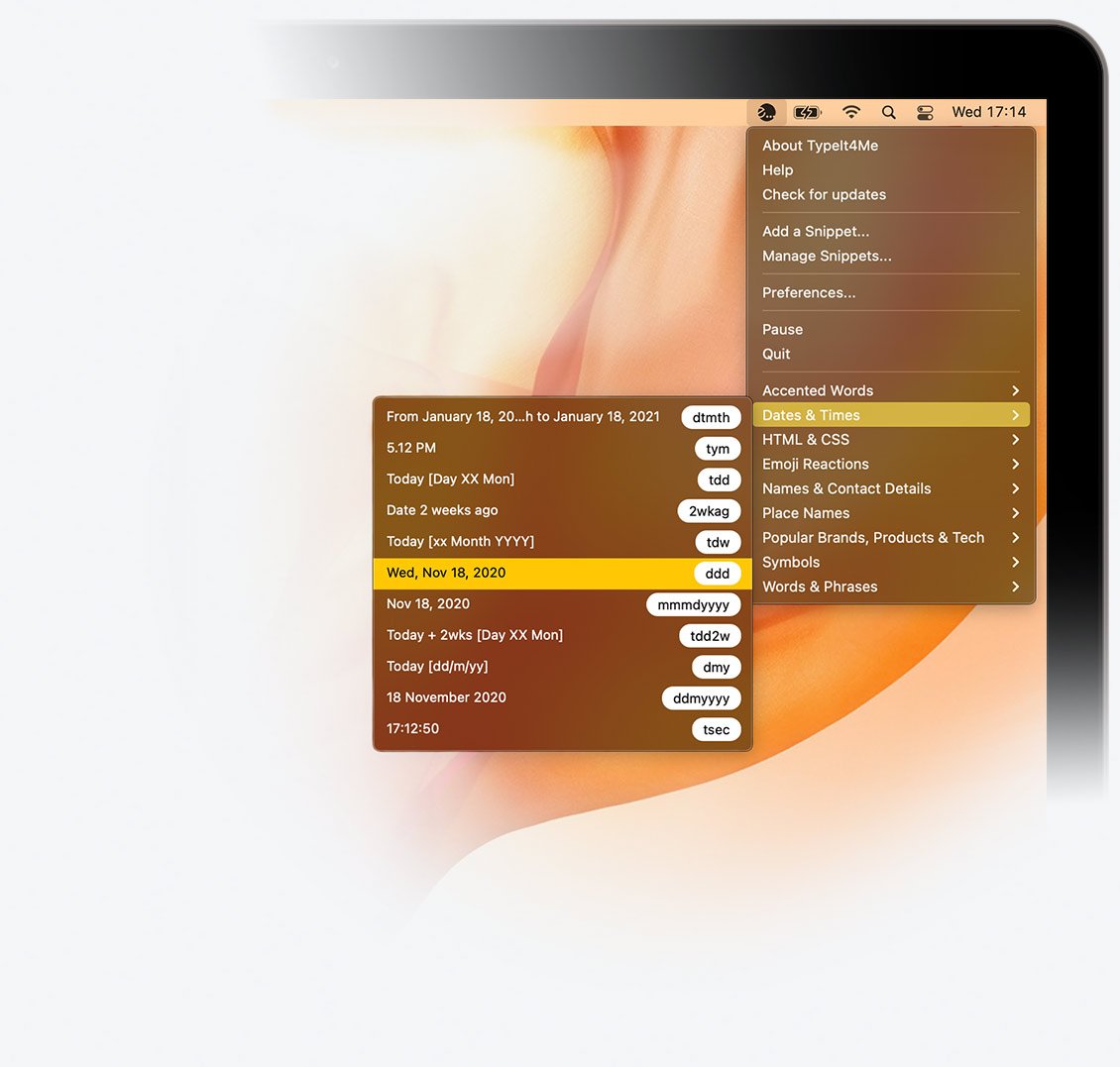

DATEADD(DAY, DATEDIFF(DAY, 0, GETUTCDATE()), -30)

The second part does the same thing, except subtracting 30 days from, at 0 hours. Moving my TextExpander snippets to Keyboard Maestro was relatively painless, thanks to Ryan M’s excellent migration script. The only snippets that had to be redone by hand were my date and time stamp snippets and those that used TextExpander’s fill-in feature. Keen to get to know TypeIt4Me This user guide is your new best friend. We should use this format where possible for the relative dates (like 'last 30 days'), but some other ranges may require our own custom URL. The URL should support elasticsearch's date math.


That gives us the very start of the current day, at 0 hours. The date and time snippets were easy to rewrite. We should add more relative date ranges for common ranges, like YTD, this fiscal quarter, last fiscal quarter, last fiscal year, and maybe others. Is the adding the number of days between and current to. 14 chron: Create a Chronological Object chron-internal: Internal chron objects cut.dates: Create a Factor from a Chron or Dates Object dates: Generate Dates and Times Components from Input day.of.week: Convert between Julian and Calendar Dates days: Return Various Periods from a Chron or Dates Object format.
#Typeit4me date math issue full
Which means the full expression: SELECT DATEADD(DAY, DATEDIFF(DAY, 0, GETUTCDATE()), 0) That gives us the number of days between and the current date. Let's look inside our original query: SELECT DATEDIFF(DAY, 0, GETUTCDATE()) This will bring back 00:00:00.000, which is the same thing as this: SELECT DATEADD(DAY, -1, '19000101') AS Which means that you can convert nearly any number to a date. SELECT DATEDIFF(DAY, 0, GETUTCDATE()) AS ,ĭATEDIFF(DAY, '19000101', GETUTCDATE()) AS In date math, the number 0 and the date are interchangeable. On this particular day, it returns 19:34:20.050. Start with this: SELECT GETUTCDATE() AS utc_date Search capabilities on all edition names, publisher, date, or keywords. That isn’t a case of simply executing as_timestamp(.next_dawn) - 86400 because that could get me yesterdays dawn time also.Īlso thanks to for suggesting that component it looks great however I don’t think it’ll fit my particular set of needs.The best way to understand how date math works is to break a query down into its parts. As soon as today’s dawn has passed, sun.sun sets next_dawn to tomorrow’s dawn, which is unusable for my purposes, as I need the dawn from today.
#Typeit4me date math issue code
This is the code I’ve resorted to to try to parse a sun time to a datetime object: Īs you can see, I take the next_dawn time from sun.sun and apply the time to today. We can use strptime to convert this into a date but that is far from easy - as strptime itself is quite limiting - it doesn’t offer a parser for +00:00 as an offset, for example (it will only parse +0000). Part of the problem is that all attributes are strings so _dawn comes back as - for example “T16:51:12+00:00”. Several functions are strict when passed a DATE () function value as their argument and reject incomplete dates with a day part of zero: CONVERTTZ (), DATEADD (), DATESUB (), DAYOFYEAR (), TIMESTAMPDIFF (), TODAYS (), TOSECONDS (), WEEK (), WEEKDAY (), WEEKOFYEAR (), YEARWEEK (). To give a concrete use case, I am tweening my light brightness between dawn and midday, then back down through midday to dusk, so that the lights ramp up and down throughout the day - mimicking the sun. It takes a lot of code gymnastics to get a datetime object out from an attribute that has a date string, to then do comparison to something like now() There is a small but very significant gap in the Jinja functions when trying to do any kind of Date manipulation for template sensors.


 0 kommentar(er)
0 kommentar(er)
